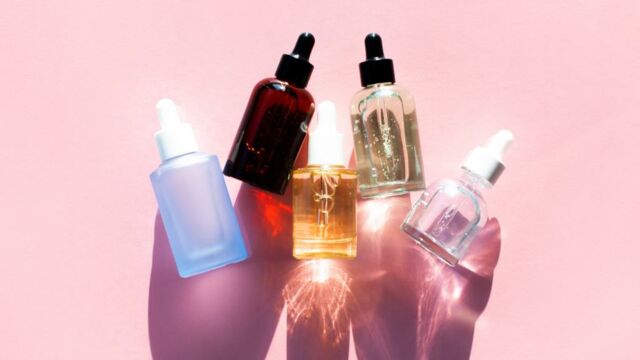Acne is one of the most common skin conditions out there, and every week there is a hot new ingredient to treat it every week. Among all these serums, lotions and cleaners, it can be hard to figure out which skincare products to look out for, so we’ve compiled a list of the best over the counter products to target acne.
Discover our latest podcast
Ten skincare ingredients to treat acne
1. Salicylic acid
Salicylic acid is a beta hydroxy acid, otherwise known as a BHA. Like other BHA’s, salicylic acid is a chemical exfoliant that penetrates deep into the skin to unclog pores, making it an ideal treatment for blackheads and whiteheads.
Salicylic acids can be found in several cleansers, toners, acne treatments and masks, but while you may be eager to add this product to your daily routine, it’s best to start slow. Over exfoliating with salicylic acid can lead to dry skin and irritation, which can cause the skin to overproduce oils and make acne worse.
2. Benzoyl peroxide
Benzoyl peroxide is one of the most common OTC treatments for mild to moderate acne. This miracle ingredient comes in the form of gels, cleaners and creams and even in different strengths so you can build towards a higher percentage.
Benzoyl peroxide acts as an antibacterial, killing off acne-causing bacteria in the skin and reducing inflammation. This ingredient is best for inflammatory acne such as papules, pustules, cysts and nodules.
3. Glycolic acid
Glycolic acid is a gentle yet powerful chemical exfoliant classed as an alpha hydroxy acid (AHA). This acid helps to treat acne by exfoliating away dead skin cells and excess sebum and can even stimulate collagen production and hydrate the skin.
Like salicylic acid, glycolic acid can be found in foaming cleansers, toners, exfoliating pads and peels. This multitasking ingredient can even help to reduce skin texture and hyperpigmentation. Glycolic acid also works well when used with benzoyl peroxide as an extra effective weapon against acne.
4. Niacinamide
Niacinamide is a skincare acid with antibacterial properties that make it effective in treating inflammatory acne. Niacinamide also has sebum reducing and mild exfoliating properties, making it effective at treating blackheads and whiteheads.
Despite its benefits, niacinamide may not be the best ingredient for acne caused by hormones, stress and lifestyle habits. However, it can still reduce the appearance of acne and acne redness.
5. Lactic acid
Lactic acid is less common for treating acne and is often found in anti-ageing products instead. However, as an AHA, it can exfoliate the skin and reduce sebum and the build-up of dead skin cells. Lactic acid also has antibacterial qualities that help fight against P.acnes bacteria.
Lactic acid is also a multitasking exfoliant and can help to reduce pigmentation, increase collagen, provide hydration, and even help other products like benzoyl peroxide penetrate deeper into the skin.
6. Mandelic acid
Another effective AHA that can be found in many OTC products is Mandelic acid. Like lactic and glycolic acid, mandelic acid also exfoliates the skin, unclogs pores, and fights hyperpigmentation; however, it is much more gentle on the skin.
Mandelic acid can also be found in cleansers, toners, exfoliating pads and peels and helps increase the effectiveness of other acne treatments.
7. Zinc
Zinc is one of the body’s essential nutrients, and deficiencies in zinc have been associated with acne breakouts. Taking zinc supplements can reduce the symptoms of acne by suppressing inflammation, acne-causing bacteria and helping to balance hormone levels.
So far, there is no evidence that topical zinc affects acne, but pill supplements are widely available in pharmacies.
8. Sulphur
Sulphur is an amino-rich skincare ingredient that can be found naturally in the hair, skin and nails. This mineral contains anti-microbial and anti-inflammatory properties that make it an effective treatment for blackheads and whiteheads. It is also widely believed that sulphur can also remove dead skin cells and excess sebum.
Those who have more sensitive or oily skin will benefit the most from this gentle acne treatment. Sulphur often comes in the form of clay masks, foaming cleansers and spot treatments and is best used in conjunction with other acne-fighting ingredients.
9. Tea tree oil
Tea tree oil is an essential oil that has been used as a home remedy for hundreds of years. Research has also backed up much of the anecdotal evidence on this essential oil, including its acne reducing properties.
Tea tree oil is rich in antibacterial, anti-inflammatory and anti-fungal properties, making it an effective treatment for many skin conditions such as acne, psoriasis, eczema and healing lesions.
Tea tree oil can be found in many cleansers and spot treatments, but you can also make your own tea tree oil treatment.
How to make a DIY tea tree oil treatment:
- Combine one part tea tree oil with nine parts water
- Dip a cotton swab or pad into the mix and apply to desired areas
- Follow up with a moisturiser
10. SPF
Sun protection is the most essential skincare product there is. Exposure to UVA and UVB can cause free radical damage to the skin, resulting in inflammation and advanced ageing. Many exfoliating acids and acne treatments can also be sun-sensitive or sensitising to the skin, so it’s best to use those products at night and use a broad spectrum SPF during the day.















